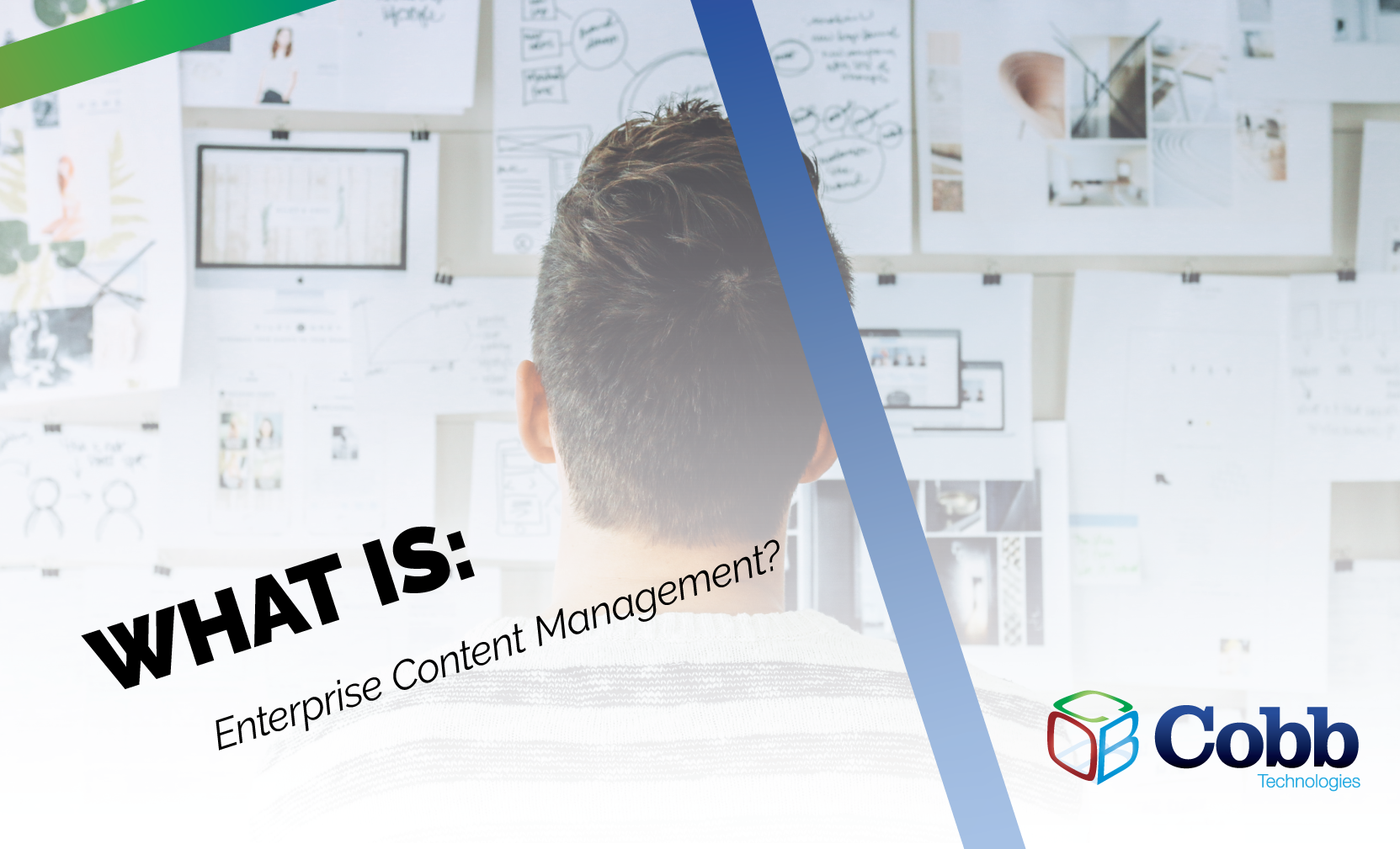2 min read
We “LOUVRE” Strong Passwords: How a Weak Password Can Lead to Big Losses
The Louvre’s password became the punchline of a global story after a heist revealed major security concerns for the museum. Reports say the password...

If you have ever spent fifteen minutes searching through shared folders for a particular document, spoken with a co-worker about a document only to realize you’re both looking at different versions, or wasted precious hours processing documents through repetitive, mundane tasks, there is a light at the end of the tunnel: enterprise content management.
Often referred to as ECM, enterprise content management solutions are robust software systems that are designed to organize, automate, and control un-structured data, like images, word documents, pdfs, and other file types you work with throughout your day.
The hallmarks of ECM systems are as follows:
Let’s look into what those entail.
Perhaps the most impactful aspect of an ECM system is the automation of workflows. The processes that can be automated include almost any kind of workflow based around a document, like a purchase order, or a time-off request from an employee.
Every step in a document’s workflow can be automated, from automatically sending the document to the employee responsible for it, to alerting the next employee in the workflow chain. ECM systems are even designed to double-check work before the document is passed along to the next employee in the process, ensuring no wasted time in a workflow.
So, when you hear someone speak the phrase “workflow automation,” what they’re talking about is this: a system that prompts employees on a task, acts as the messenger between the employees responsible for the workflow, and ensures the process is done correctly.
Because ECM systems automate document workflows, they reduce the number of prints associated with that workflow. Since all employees work within the same system, there is no need to print out a PDF just to scan it back into the system, just as there is no need to print a document to pass it along to the next employee in the workflow.
When documents are shared seamlessly between employees, and even separate departments, the need to print out documents is drastically reduced.
Everyone has their own system for organizing files in folders. Imagine for a moment that you are searching for a brochure from a reoccurring, annual event. Do you search in a folder with last year’s date? Do you search in a folder labeled marketing materials? Or by the event name?
If this particular file is stored on your personal computer using your personal system of organization, it’s likely you can find the file very easy. But, would one of your teammates have as easy of a time locating the file? Probably not.
ECM systems avoid this problem entirely, as all documents are stored in the same system, often without folders. While a lack of folders may seem like a significant interruption of your daily operations, the opposite is actually true. When organizations begin using ECM systems like M-Files, the ease of collaboration is extremely noticeable.
When your employees don’t have to worry about searching through specific folders to find a particular file, they can spend more time actually working. ECM systems like M-Files leverage AI to manage their database, using pattern recognition and machine learning to determine who is mostly likely to search for a particular document or file.
What this means is that every employee is presented with a system that is unique to their role, and the files they interact with, all while engaging with the same system, the same dataset, and the same files.
We all know the pain of putting hours of work into a document, only to discover the next day that all those hours of work were put into an out-of-date file. ECM systems solve this issue by ensuring all files within your system are always the most recent version.
Similar to track changes in a Word document, ECM systems keep track of all changes made to a file, including who was responsible for the changes, as well as when those changes were made. In addition to this, you can easily switch back to an old version of the file if something was implemented incorrectly.
A defining feature of an ECM system is that of synergy with all of your organization’s existing systems. For instance, if your accounts payable department uses Quickbooks, an ECM system will work within and communicate with Quickbooks.
The universal implementation of ECM systems is not only limited to software — ECM systems will also work with most internet-enabled devices, from a PC or laptop, to your employees’ smartphones. The benefits of this will be quickly noticed throughout your organization; when a sales rep can work on a proposal on their laptop, save the document, and then reference that same document on their mobile device without ever emailing it or uploading it to a shared folder, their speed of business can increase.
And in today’s world, fast businesses prosper, while slow businesses lag behind.
If you’ve ever used a cloud storage system like Google Drive, Dropbox, or Box, you may be wondering what benefits an ECM system has that file storage systems lack. After all, Google Drive works on virtually any device imaginable, offers version control, and has limited data organization capabilities.
ECM systems, however, offer more robust applications of the features listed above, and allow for customization for your organization’s needs. ECM systems, behind the scenes, automatically organize and store your data according to rules set by your business. During an ECM system’s initial implementation, your managed service provider will work with you to discover how your organization completes common workflows.
This discovery process will follow a specific document from the moment it enters your organization’s network, to the moment it is stored or disposed of, whether the workflow revolves around a digital or physical document.
Then, this workflow will be implemented into the ECM system, which will then automate large portions of the workflow, based specifically upon how your organization operates. Because ECM systems are completely customizable, you can even find data in documents that are unstructured, like a pdf file.
If your organization relies on document-based workflows for its standard operations, you should consider implementing an ECM system. Because of their robust universality and AI-empowered data organization, they can reduce wasted resources and lost time within your organization.
If you’d like to learn more about content management, visit our blog, What Do I Need to Know about Document Automation?

2 min read
The Louvre’s password became the punchline of a global story after a heist revealed major security concerns for the museum. Reports say the password...

6 min read
Organizations of all sizes handle enormous volumes of data. Data is one of the most valuable assets of any organization.Unfortunately, it’s also a...

5 min read
In today’s digital-first workplace, your network is more than just a connection point; it’s the foundation of your operations. Whether your...